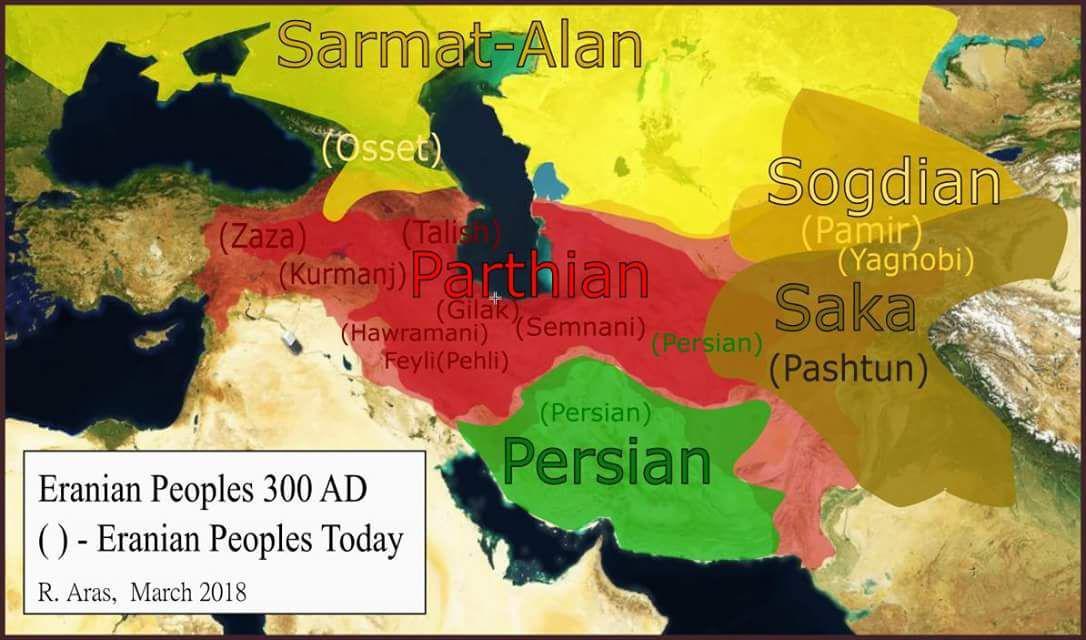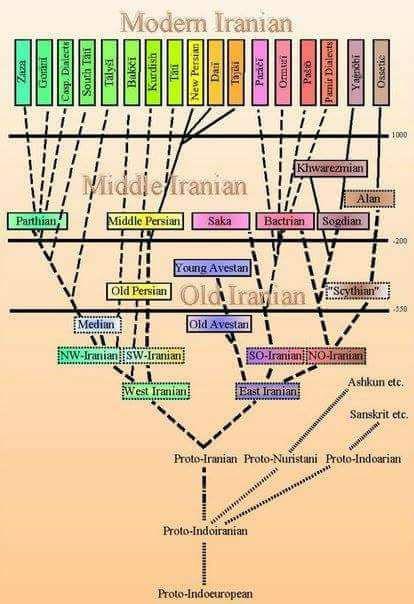1-3 Article for knowing and 25 cm
 •
by
•
by Commoners
My great friends you are the one !
Hi AND WISH YOU THE BEST
this is my first of 3 article but i want to publishing something that when you read them at the end become satisfied for spending your times
ok lets go , this article is about Language

The Eastern Iranian languages are a subgroup of the Iranian languages emerging in Middle Iranian times (from c. the 4th century BC). The Avestan language is often classified as early Eastern Iranian. The largest living Eastern Iranian language is Pashto, with some 50-60 million speakers between the Hindu Kush mountains in Afghanistan and the Indus River in Pakistan. As opposed to the Middle Western Iranian dialects, the Middle Eastern Iranian preserves word-final syllables.
Eastern Iranian
Geographic
distribution Central Asia, northwestern South Asia, Caucasus. Historically in Scythia and Sarmatia.
Linguistic classification Indo-European
Indo-Iranian
Iranian
Eastern Iranian
Subdivisions
Northeastern
Southeastern
Glottolog east2704[1]
The living Eastern Iranian languages are spoken in a contiguous area, in eastern Afghanistan as well as the adjacent parts of western Pakistan, Gorno-Badakhshan Autonomous Province of eastern Tajikistan, and the far west of Xinjiang region of China, while it also has two other living members in widely separated areas, the Yaghnobi language of northwestern Tajikistan (descended from Sogdian) and the Ossetic language of the Caucasus (descended from Scytho-Sarmatian). These are remnants of a vast ethno-linguistic continuum that stretched over most of Central Asia, Eastern Europe, and parts of the Caucasus, and West Asia in the 1st millennium BC, otherwise known as Scythia. The large Eastern Iranian continuum in Eastern Europe would continue up to including the 4th century AD by the successors of the Scythians, namely the Sarmatians.[2]
The solution is to be found in the old Asiatic binal-quinary (2+5) philosophical system. In some very erudite and deep studies the Swiss orientalist, L. de Saussure, among others, demonstrated that the Old Iranians just as the Old Chinese, indicated the cardinal points by colors. 4 Yellow, the earth color, indicated center. Green indicated east, white west, red south, and dark or black north. For that reason the Old Persians - according to the evidence of Herodotus - called the sea which was south, i.e. the present-day Indian Ocean, the Red Sea; today only the gulf of that sea, through which one can reach the Suez Canal, is called so. They named the sea to the, north the Black Sea (ahshaena). The Greeks took over that name, and then all other peoples. Today, too, we call it the Black Sea. They named the sea on the west the White Sea, and today yet, the Turks, the heirs of the Old-Persian terminology, call the Mediterranean the White Sea (Akdeniz). If we observe Porphyrogenitus' statements in that light, it will be clear that his White Croatia is the same as West Croatia and his Dark Sea the same as the North Sea or Baltic. J. B. Bury long ago established the fact that Porphyrogenitus received his information about the Croats from the Croats themselves, directly or indirectly. Indeed the names White Croatia, White Serbia, and the Dark Sea originated with them. The Croats in Dalmatia were the Red Croats in comparison to the White Croats in the autochtonous country, and their Croatia was Red or Southern Croatia compared with that beyond the Carpathians and the Sudeten. The Croats in the south indeed continued to think in the Old-Iranian categories of the binal-quinary system. The names of the days in the week and the twelve months in a year are strikingly in the harmony with the principles of that system. Also the geographical colors were still used in the south. The Croats still mentioned the new Dalmatian homeland in the domestic sources during the Xth and XIth centuries as White and Red Croatia: White Croatia was located west or, more accurately, north-west of the mouth of the river Cetina and Red Croatia south or south-east. The area between them was called Krajina (Borderland). It is significant that the western frontier of Dalmatian White Croatia was called White Borderland (Bijela Krajina). Still today, in the territory beyond the river Kupa in present-day Slovenia, where more Croatian is spoken than Slovenian, it is called that. The most southern part of old Dalmatian Red Croatia was also called Borderland (Krajina), namely the Red Border-land (Crvena Krajina). Later, the Albanians received that expression and they still refer to the territory between the river Drin and the river Matja as Kuce, i.e., the Red one. S. M. Stedimlija registered interesting examples of the use of the three geographical colors on the territory of old Dioclela, which was the political center of Red Croatia during the XIth century. "It is known," he wrote, "that certain localities around the present-day hamlet of Gusinja were still named Black Mount (in Albanian, Malesia) in the late Middle Ages, and there are to be found Black Mountain, Black Summit, etc. These localities are to be found north of the center of the former province Praevalis, and their adjective "black" undoubtedly meant northern. The names Crvena Gora (Red Mountain), Crvnica, Kuceva or Crmnica, Crvica, Crveni Izvor (Red Source), Crveni Krs (Red Rocks), Crvena Ploca (Red Slab) etc., are to be found south of the center of the same province. Here the adjective "red" undoubtedly means southern, as also the adjective "white" means western in the names Bijela Gora (White Mountain), Bjelice, Bjelosi, Bijela, Bjelan, Bjelisi, Bijeli Potok (White Creek) etc., because all localities which have these names are to be found on the western side

Old Iranian
Southwest: Old Persian†
Northwest: Median†
Middle Iranian
Southwest: Middle Persian†
Northwest: Parthian†
Neo-Iranian
Northwestern I (dialects of Kurds)
Kurdish: Central Kurdish, Northern Kurdish, Southern Kurdish, Laki
Zaza–Gorani
Zaza (dialects: Kirmanjki, Dimli)
Gorani (dialects: Hawrami, Bajelan)
? Shabak, Sarli
Northwestern II
Balochi: Balochi, ?Koroshi
Khuri (Kavir)
Tatic
Talysh
Tati/Azari: Old Azeri†, Harzandi, Karingani, Kho'ini, Khalkhal, Upper Taromi, Rudbari, Southern Tati, Eshtehardi, dialects N/NE of Qazvin
? (Talysh? Tati?): Gozarkhani, Kajali, Koresh-e Rostam, Maraghei, Razajerdi, Shahrudi
Tafresh (transitional): Ashtiani (Amora’i, Kahaki), Vafsi, Alviri-Vidari (Alviri, Vidari), ?Judeo-Hamadani
Central / Central Plateau (Kermanic)[4]
Northwestern: Khunsari, Mahallati, Vanishani, Judeo-Golpaygani
Southwestern: Gazi, Sedehi, Ardestani, Nohuji, Sajzi, Jarquya’i, Rudashti, Kafrudi, Kafruni, Judeo-Esfahani
Northeastern: Arani, Bidgoli, Delijani, Nashalji, Abuzaydabadi, Qohrudi, Badrudi, Kamu’i, Jowshaqani, Meyma’i, Abyana’i, Soi, Badi, Natanzi, Kasha’i, Tari, Tarqi, Judeo-Kashani
Southeastern: Zoroastrian Dari, Nayini, Zefra’i, Varzenei, Tudeshki, Keyjani, Abchuya’i
Northwestern III
Semnani: Semnani, Sangisari, Lasgerdi-Sorkhei (incl. Aftari)
Caspian: Gilaki (incl. Taleqani), Mazandarani, Gorgani†, ?Deilami
Southwestern (cf. dialects of Fars)
Persian (dialects: Iranian Persian, Dari Persian (Madaglashti), Tajik Persian, Hazaragi Persian, Aimaq, Sistani, Pahlavani Persian†, Dzhidi Persian (Judeo-Persian), Judeo-Bukharic), Muslim/Christian Tat, Judeo-Tat
Persid
Khuzestani/Dezfuli
Luri (dialects: Luri, Mamasani, Kohkiluyeh, Bakhtiari)
Sivandi
Northwestern Fars
Kuhmareyi (incl. Davani)
Larestani–Gulf
Lari (Larestani), Judeo-Shirazi
Gulf: Bashkardi, Kumzari, Bandari, Minabi
An Iranian Khalaj language has been claimed but does not exist; the Khalaj speak a Turkic language.
The dialects of Central Iran are a geographic rather than genetic grouping. They are spoken mostly in Markazi and Isfahan provinces. Many of them are giving way to Persian in the younger generations


Comments
o7
tanx
Great!! Keep on!!
thank you
[removed]
o7
Nice article o/
tnx
++
cm for ''leon''
o7
tnx
hi
tnx dear uncle
do you need more comments ???
for next two yes bro
is this one completed???????????????
it seems like half the comments are from you
This one need 8 cm
Finished?
We are ready if more needed 😉
This or any other article 😉
heyo
wow
o7
The clown has hereby approved the article.
Thanks a lot
o7
O7
V+agregado+suscrito
SEPAS
Very interesting Indo 💚
Sepas
comment
o7
o/
o/
o7
efcs
meow
Prince was here
Rabbit was here also 😉
Rican sent me 😉
🐰7
o7
o7
an excellent article, as you always do my friend.
keep up the great work!
o7
Thank you so much master .honestly when I am thinking about your words as my best in game supporter made me step forward
Pulento germánico
Pulento germánico
comment